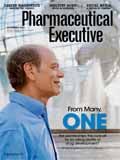Dr. Reddy's — The Turnaround
Q&A with Satish, Reddy, MD, COO of Dr. Reddy's Labs
Can you please elaborate on the results for 2010—a year in which Dr. Reddy's was the best performer in the stock exchange?
In 2010, there was a clear turnaround at a global level, of which the cost reduction strategy was only one driver of the better results. A second driver was the product launches in the US. We spent a lot of effort on penetrating this market with products for which limited competition exists. The advantage of such products is that they have higher margins, and thus a longer life in the US market. Two other drivers were sales in India, which is also back on the growth track, and sales in Russia, where Dr. Reddy's is one of the fastest-growing international companies.

Satish Reddy, MD, COO of Dr. Reddy's Labs
Five years ago, Dr. Reddy's was among the top 10 companies in terms of domestic sales in India. In the latest OPPI ranking, we see you have now taken the 13th place. How do you explain this drop?
Looking at what happened over the last few years, a factor of change has been the consolidation of the industry. This was one factor that may have affected such a ranking. In addition to that, it can be said that our performance was not that good during this period of time. Compared to other companies that were very aggressive on launching new products, we would probably rank among the lowest, due to our focus on brand building instead.
To get back on track in India specifically, we took a number of measures. The first thing we did was to launch new products. It is not just about the number of products, of course, but also about their quality and contribution to sales. The product launches in the last 18 months alone are now contributing 4% to 5% of total sales, which is a healthy situation. Other measures we worked on were the refocusing on our product portfolio as well as better time management for product launches.
Apart from the portfolio, we also worked on our field force deployment. While numbers do not tell the entire story, it is worth mentioning that we increased headcount in India from 1,500 to 3,000. We realized that our strength as a company was towards general physicians and consulting physicians. We therefore decided to expand the field force for the mass kind of therapies. In a second step, we worked on matching the division's field force with the right capabilities to achieve a larger share of voice in the market. This is also starting to pay off.
Thirdly, we have also worked on our distribution network. We streamlined the availability of our products in the market and at the same time improved the working capital of our distributors. Moreover, this supply chain initiative made the manufacturing chain much simpler.
These three initiatives are now starting to show results.
While in the past you mainly entered foreign markets on your own, you have now entered into an alliance with GSK to address your emerging markets. How do you explain this move?
When we revised the company strategy and business model three to four years ago, we noticed that the company was spread out over several parts of the globe, with a presence in over 30 emerging countries. We could also see that these different countries received different levels of investment. Investing in these markets eventually started driving up our costs and increased the complexity of our operations, particularly because we were also serving very small nations generating lower ROI.
The idea behind this subsequent shift in strategy was to reduce focus to a few markets instead. The GSK proposal came at the right time. The strength of the agreement lies in the fact that it is a revenue-sharing deal, which seems to work out well. Moreover, we are also developing products together (differentiated formulations), which increases our share of revenue. GSK's strong commitment to the branded generics business as well as their experience in India were additional factors that tempted us into this collaboration.
What is on the top of your agenda today?
The immediate priority is to work towards our $3 billion target. Today, it is all about execution to reach that target. On a slightly longer horizon, it is all about the value creation aspect of the business. The plan to create value beyond 2013 is to unfold value from the biosimilar strategy, from the proprietary products, and maybe at a later stage from the NCEs. Even then, it is all about how we scale up and execute to the best affordability to meet all these targets. This is not an easy task, as we have grown into a huge organization with over 13,000 people spread out all over the world. In guiding this global workforce, it will also remain a priority to build leadership within the company to take Dr. Reddy's to the next level.
Do you have a final message for the readers of Pharmaceutical Executive?
I think this is the time for the Indian pharmaceutical industry, both in terms of domestic and international opportunities. Indian companies stand a very good chance to compete aggressively and take market share.
More than the Chinese companies?
Any day!
